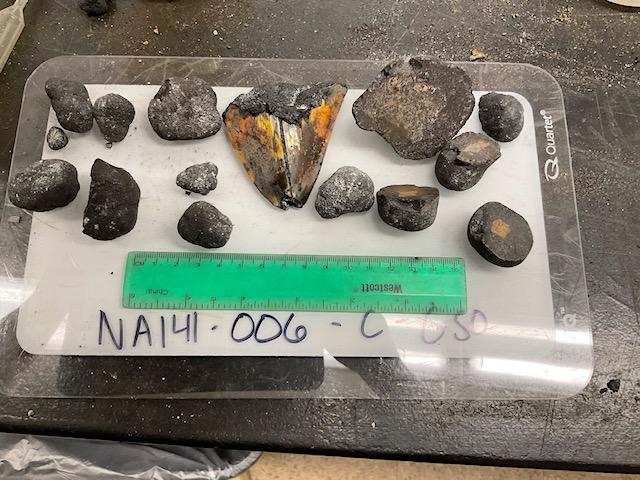A new study claims that a megalodon tooth was discovered in the ocean depths in 2022. The tooth, which was found during a three-week expedition to explore deep-sea biology near the Jonhston Unit of the Pacific Remote Islands Marine National Monument, sampled several rocks from the area. The tooth was one of the more exciting developments, though.
Those samples were then shipped to the University of Rhode Island’s Marine Geological Samples Laboratory, where they were cataloged and made available to researchers worldwide, Nautilus Live explains in their report on the tooth. However, the researchers didn’t discover that it was a tooth until much later.
Discovering a megalodon tooth is extremely exciting, because it helps to prove the existence of some of the largest sharks of all time, which are believed to have gone extinct roughly 3.6 million years ago. Dr. Dave Ebert confirmed the megalodon categorization, though the team has yet to identify exactly what species of megalodon it belongs to.

These types of teeth are commonly found across the global ocean and shorelines where fossil beds have become exposed to the motions of the waves and even to rivers, the researchers explain in their report. This particular tooth is exciting because it could give us even more information about the area surrounding Johnston Atoll, which was the main goal behind this expedition.
The sediment and minerals on the megalodon tooth typically form at 2.5 mm per million years. Therefore, the researchers hope to use the thickness of the mineral deposit around the tooth to help identify when it was lost, and even possibly what species of megalodon it belonged to.
Previously, researchers uncovered another ancient shark tooth, which they say could have decimated a great white. Of course. learning more about these ancient creatures can help us learn more about our ancient world, including what drove the evolutionary processes of modern creatures to their current designs.








